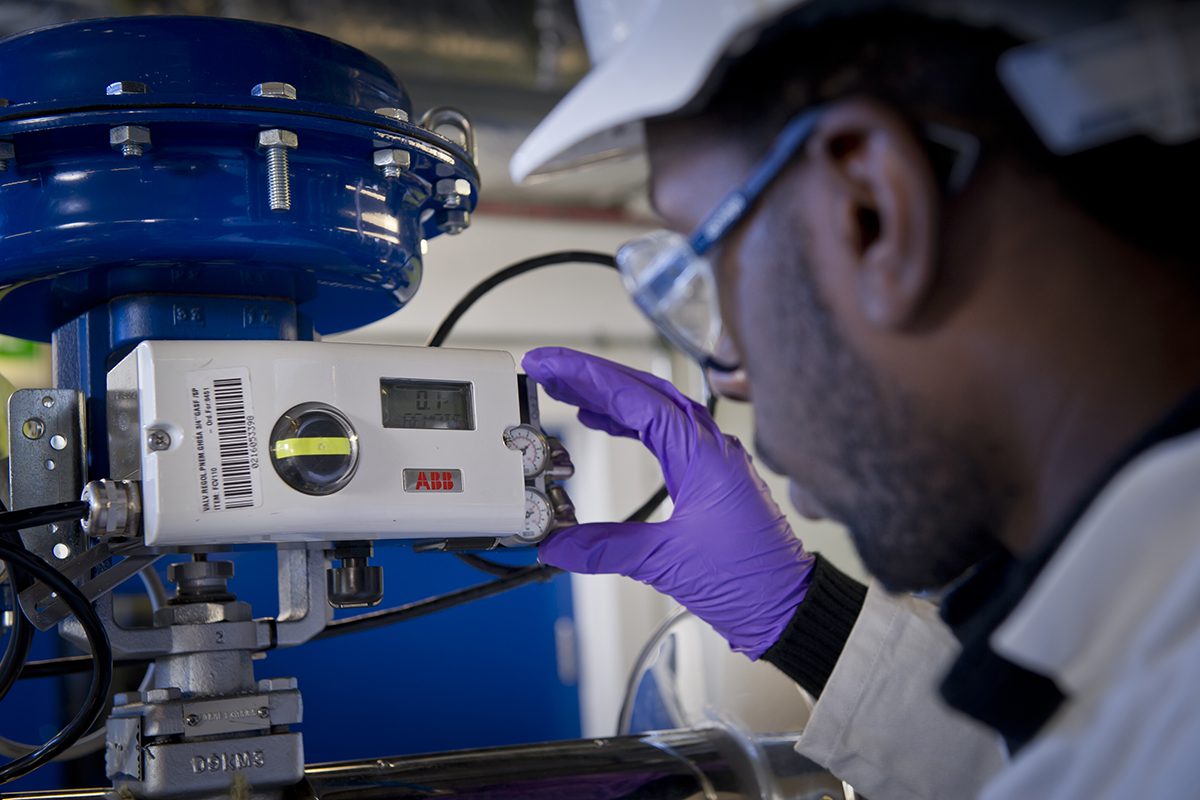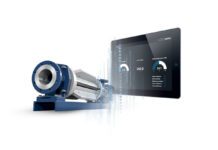
When it comes to boiler control, selecting the right types of valve actuators and positioners is key to ensuring safe, efficient and reliable performance whilst also minimizing environmental impact through reduced emissions. Naas deJager, Global Product Manager for ABB’s actuator and positioner products, looks at some of the key challenges that can arise in boiler control applications and how they can be solved by choosing the right actuator for the job.
The growing awareness of the impact of human activities on the environment, coupled with initiatives such as the Paris Agreement and tightening legislation, is putting industrial companies under growing pressure to find ways to minimize their emissions.
For companies that rely on combustion-based processes, there is a need to ensure that the right conditions are achieved for optimum efficiency. Combustion optimization has become an absolute necessity for maximizing performance and efficiency as well as reducing environmental impact and increasing time between maintenance shutdowns.
However, maintaining optimum conditions can be difficult, with challenges including rapid changes in process conditions, variations in fuel quality and the impact of plant shutdowns and startups all needing to be handled by the final elements used to control combustion plants.
Widely used throughout many power plants to provide precise and continuous positioning of the final control elements used to control flows of air and other variables, actuators and positioners can make a big difference to combustion performance.
The following is a look at some of the key applications in power plants where using high performance actuators and positioners can help ensure the highest levels of boiler control.
Start up and shutdown
As complex pressurised systems, boilers require careful handling during start-up and shutdown. Minimizing thermal stresses caused by expansion and contraction and reducing fuel costs are just some of the factors that demand careful and accurate control of steam and water flows to achieve the required operating conditions.
Best practice for boiler start-up requires very small quantities of steam to be introduced over a prolonged period. To achieve this requires highly accurate control of the start-up valve.
Used only for start-up or shutdown, start-up valves will often remain in the same position – either at zero or 100 percent – for months on end. Over time, this can result in corrosion of the valve seats and other components exposed to the process, which in turn can increase the amount of break-away force needed to actuate the valve when it needs to open or close. In most cases, any problems in achieving this force will only become apparent when the valve needs to move, potentially increasing the risk of a safety issue if too little or too much steam is applied to the system. Introducing excessive steam into a system during start-up, for example, can increase the risk of expansion, where pipework can be damaged by the sudden increase in pressure as it hits the weakest point in the line. Ensuring precise control of the start-up valve to avoid this and other problems is therefore of paramount importance.
Eliminating the problems posed by valve seat corrosion requires the use of actuators that can withstand the impact of breakaway force. One solution is to use a device with double-rated force/torque. The variable force/torque design of ABB’s Contrac actuator ensures that only the required energy is delivered, minimizing the strain placed upon it when varying the valve position. The inclusion of integrated diagnostics also helps to immediately detect any potential faults, allowing operators to take the necessary remedial action.
With a dead zone of only ±0.05%, these types of actuators can also provide the high accuracy needed to ensure optimum control of steam and water flows during boiler start-up and shutdown.

Injection valve control
Injection valves are used to add cooling water at the superheater and reheater stages, reducing the temperature of superheated steam prior to it being introduced into the turbine. In certain circumstances, issues with switching frequencies can lead to variations in the quantity of cooling water passing to the turbine, causing resulting variations in the superheated steam temperature.
To help address this problem, various control measures are taken to maintain the steam temperature within a specified range. Although these measures can help protect the superheater, turbine and secondary plant components against overload, they can also impact on the turbine efficiency. Typically, turbine efficiency is reduced by around 0.05 percent for every 1°C reduction of the turbine inlet temperature. This can quickly add up – an average deviation of just 20°C will reduce efficiency by 1 percent, impairing efficiency and resulting in significant economic losses.
Many operators unwittingly incur these losses by using the wrong actuators for injection valve control applications. Problems can often arise where devices are selected with the wrong duty cycles – the ratio of on-time to off-time, usually expressed as a percentage – and the wrong ambient temperature range. If the wrong actuator is selected, then the high ambient temperatures involved in boiler control applications can prolong the time needed for the electric motors used to power the actuator to cool, reducing the actuator’s effective duty cycle and its ability to offer the necessary responsiveness to enable the valve setpoint to be accurately maintained.
The solution is to use an actuator with S9 100% duty such as ABB’s Contrac series. Offering 100 percent duty at ambient temperatures up to 85°C (185°F) without compromising accuracy, and with all components IP66 protected against dust and liquid ingress, these actuators can be used in even the harshest operating conditions. With a positioning accuracy of ±0.05%, Contrac series actuators can provide the levels of precise control needed to enable the turbine to reach and maintain its operating setpoint.
Hitting the combustion sweet spot
Achieving optimum combustion efficiency requires the correct amount of air to be supplied to completely combust the fuel being used, an ideal situation known as the stoichiometric air/fuel mixture. While this ideal situation is impossible to achieve, ensuring that the right supply of air is provided to burn the maximum amount of fuel is key to reducing the unwanted by-products such as excess CO2 and NOx emissions that can arise in applications with poor combustion control.
The ability to hit the combustion sweet spot – the point where the optimum mix of air and fuel is achieved – requires close control of the amount of air being supplied to the combustion process. Too little air will result in incomplete combustion, resulting in unburned combustibles and increasing fuel costs, while too much air will increase the generation of pollutants that will have to be removed through costly exhaust gas purification. Where excess air is applied to help improve the mix, there is also the added issue of mechanical stress on the fresh air damper system as the air supply is continuously throttled to achieve the required level.
With fuel prices increasing, optimizing the fuel/air mix can also make financial sense too. With a one per cent reduction in excess air levels producing anything from a ¼ to 1 percent increase in boiler efficiency, optimizing the fuel/air mix also presents scope for significant operational savings, especially at today’s inflated energy prices.
Using Contrac continuous electrical actuators can help provide the required levels of precision and responsiveness needed. By continuously adjusting the fresh air damper system and flue gas, the actuators can help maintain the right mix of air, fuel and pressure for optimum combustion performance, improving fuel consumption and minimizing exhaust gas emissions.
A good position
Where pneumatic actuators fitted with pneumatic positioners are used to control combustion air dampers, problems can often arise caused by a combination of poor control and adverse operating conditions. Continual exposure to the high ambient temperatures inherent in boiler applications can cause the accuracy of standard positioners to drift, resulting in impaired damper control. Damage can also be caused by process vibration, which can quickly render less robust positioners useless. With dampers often situated in hard-to-reach locations, it can also be difficult to access the positioners for maintenance, increasing the risk of premature failure.
A solution to these problems is to use a high-performance positioner with a remote sensor. ABB’s TZIDC and EDP300 positioners, for example, feature a remote sensor which can be situated with the actuator up to 10m (32 feet) away from the positioner control module. Capable of operating in conditions with ambient temperatures up to 100°C (212°F) and offering immunity to vibrations up to 10g and 80Hz, these positioners offer accurate and reliable service, enabling it to outlast and outperform conventional positioners. The ability to house the positioner control module away from the boiler damper also helps to improve access for checking and maintenance.
Digital makes a difference
Many of the measurement instruments found in process plants are undergoing a digital transformation, with a range of new functions being added that can make a big difference to performance, and actuators and positioners are no exception. One major area where developments have taken place is in predictive maintenance. Whilst the advent of 4-20mA with HART communications helped to open new possibilities for improved diagnostics, advances in electrical final control elements have taken this one step further. Now, a device that controls a final control element can provide a range of detailed data to the operator, enabling them to obtain an informed overview of how the element is performing and allowing them to spot potential problems before they escalate.
Tried and tested
The harsh and demanding nature of boiler applications calls for valve control equipment that can keep on providing accurate and reliable performance with minimum requirement for maintenance. Tried and tested in thousands of boiler installations in power and industrial applications, ABB’s actuators and positioners have demonstrated their ability to provide continuous, cost-effective operation with no deterioration in performance.
For more information, visit the actuators and positioners portal pages at Actuators and Positioners.







